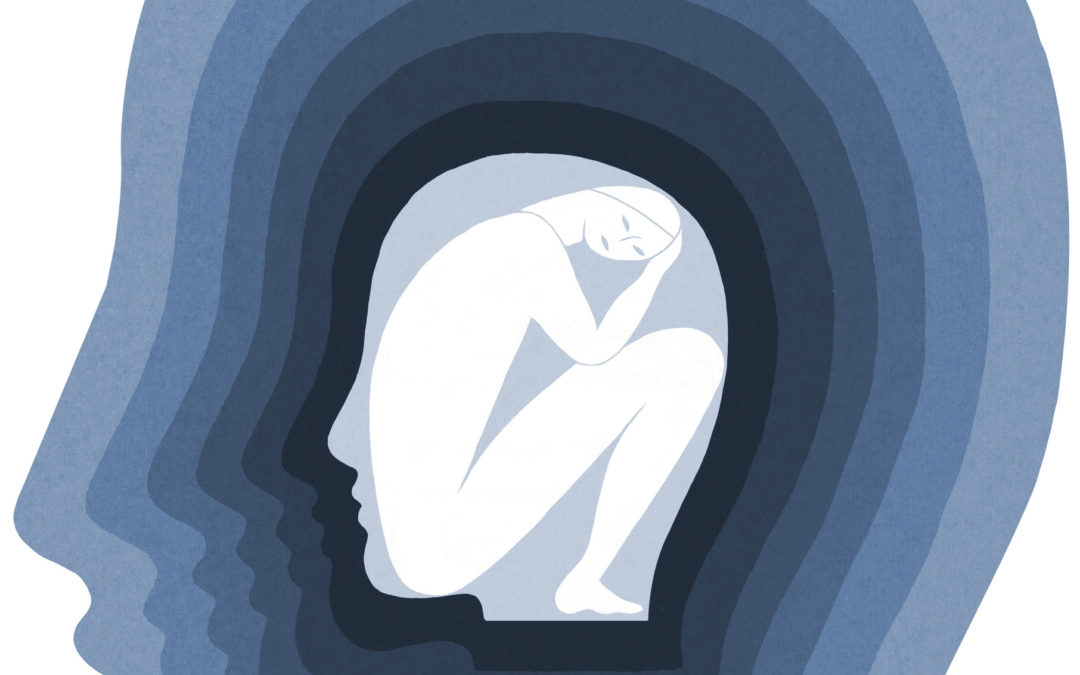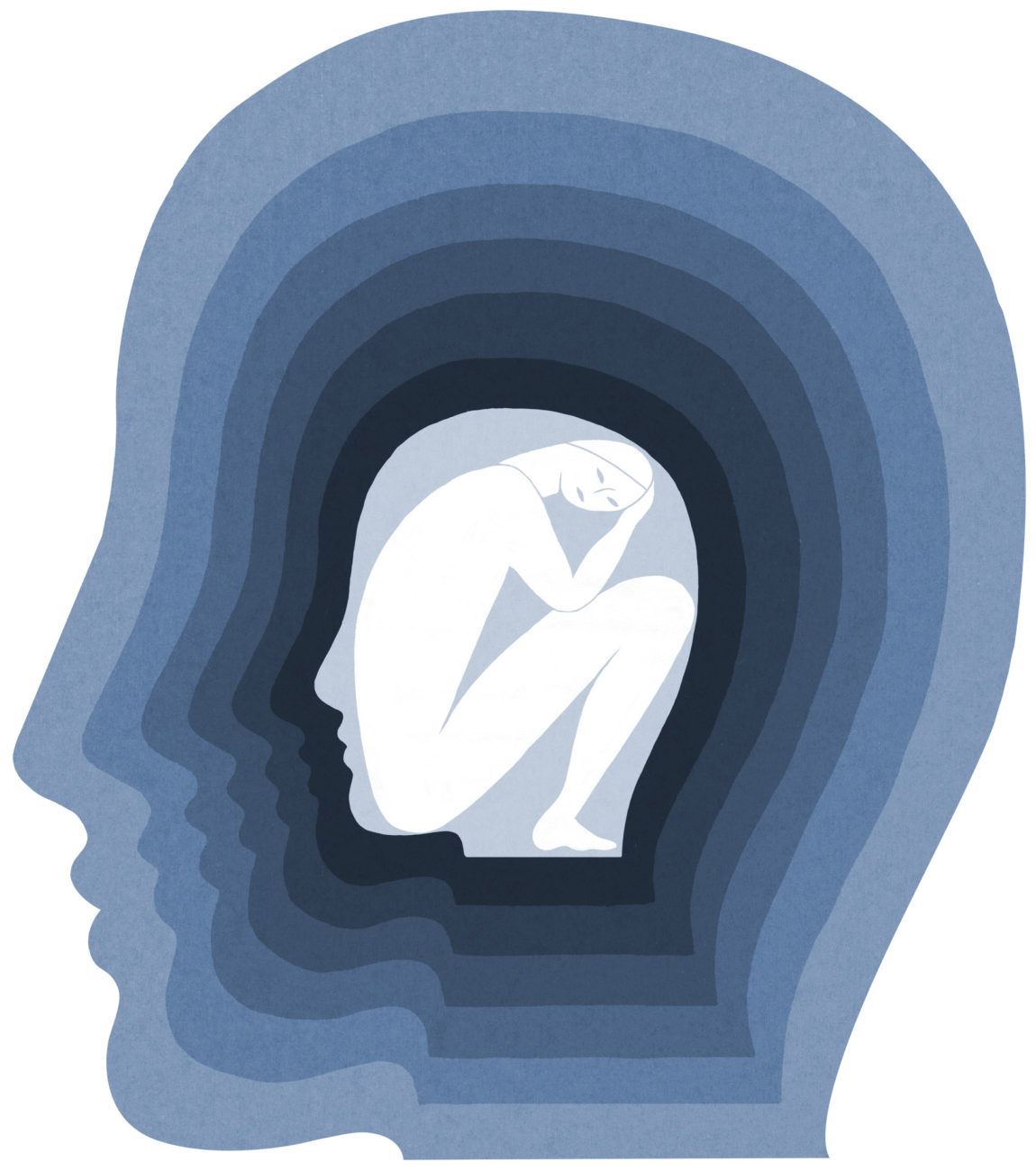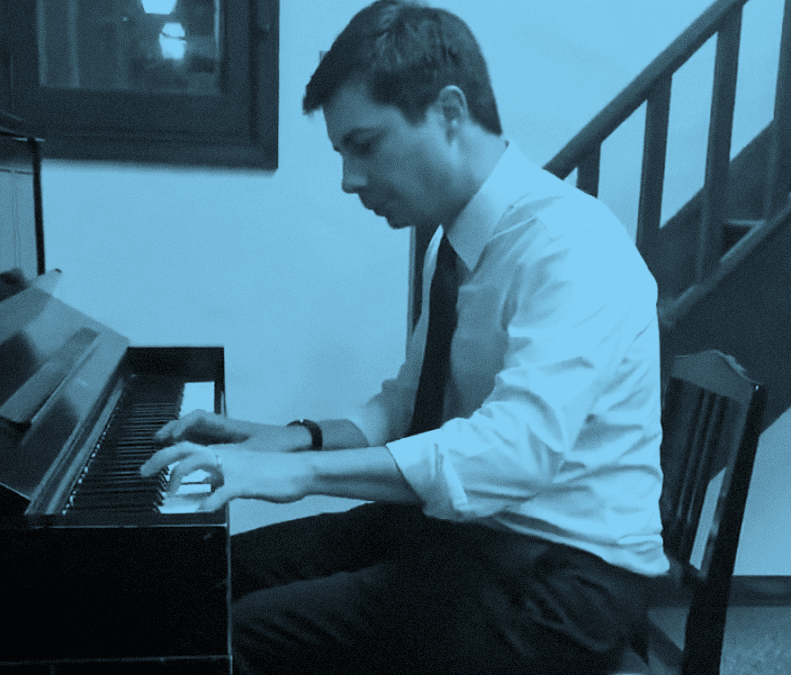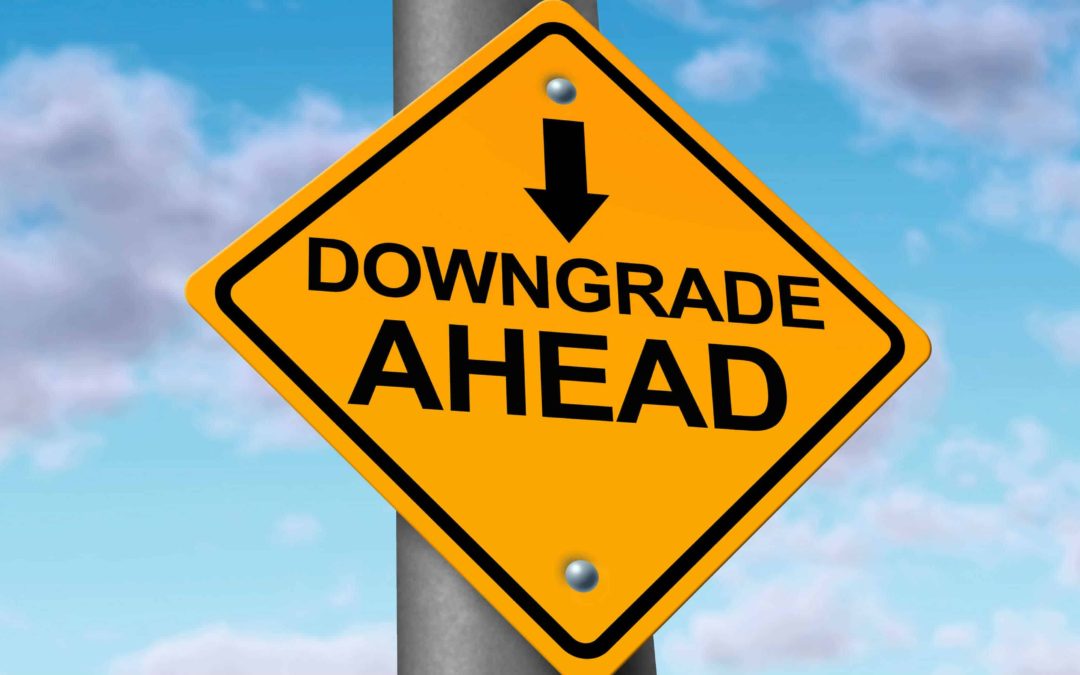
by Michael Bailey | May 13, 2019 | Personal Improvement, Psychology |

Our individualistic culture inflames the ego and numbs the spirit. Failure teaches us who we are.
Via NYTimes, By David Brooks
Mr. Brooks is an Opinion columnist. This essay is adapted from his forthcoming book, “The Second Mountain: The Quest for a Moral Life.”
April 6, 2019
Many of the people I admire lead lives that have a two-mountain shape. They got out of school, began their career, started a family and identified the mountain they thought they were meant to climb — I’m going to be an entrepreneur, a doctor, a cop. They did the things society encourages us to do, like make a mark, become successful, buy a home, raise a family, pursue happiness.
People on the first mountain spend a lot of time on reputation management. They ask: What do people think of me? Where do I rank? They’re trying to win the victories the ego enjoys.
These hustling years are also powerfully shaped by our individualistic and meritocratic culture. People operate under this assumption: I can make myself happy. If I achieve excellence, lose more weight, follow this self-improvement technique, fulfillment will follow.
But in the lives of the people I’m talking about — the ones I really admire — something happened that interrupted the linear existence they had imagined for themselves. Something happened that exposed the problem with living according to individualistic, meritocratic values.
Some of them achieved success and found it unsatisfying. They figured there must be more to life, some higher purpose. Others failed. They lost their job or endured some scandal. Suddenly they were falling, not climbing, and their whole identity was in peril. Yet another group of people got hit sideways by something that wasn’t part of the original plan. They had a cancer scare or suffered the loss of a child. These tragedies made the first-mountain victories seem, well, not so important.
Life had thrown them into the valley, as it throws most of us into the valley at one point or another. They were suffering and adrift.
Some people are broken by this kind of pain and grief. They seem to get smaller and more afraid, and never recover. They get angry, resentful and tribal.
But other people are broken open. The theologian Paul Tillich wrote that suffering upends the normal patterns of life and reminds you that you are not who you thought you were. The basement of your soul is much deeper than you knew. Some people look into the hidden depths of themselves and they realize that success won’t fill those spaces. Only a spiritual life and unconditional love from family and friends will do. They realize how lucky they are. They are down in the valley, but their health is O.K.; they’re not financially destroyed; they’re about to be dragged on an adventure that will leave them transformed.
They realize that while our educational system generally prepares us for climbing this or that mountain, your life is actually defined by how you make use of your moment of greatest adversity.
So how does moral renewal happen? How do you move from a life based on bad values to a life based on better ones?
First, there has to be a period of solitude, in the wilderness, where self-reflection can occur.
“What happens when a ‘gifted child’ finds himself in a wilderness where he’s stripped away of any way of proving his worth?” Belden Lane asks in “Backpacking With the Saints.” What happens where there is no audience, nothing he can achieve? He crumbles. The ego dissolves. “Only then is he able to be loved.”
That’s the key point here. The self-centered voice of the ego has to be quieted before a person is capable of freely giving and receiving love.
Then there is contact with the heart and soul — through prayer, meditation, writing, whatever it is that puts you in contact with your deepest desires.
“In the deeps are the violence and terror of which psychology has warned us,” Annie Dillard writes in “Teaching a Stone to Talk.” “But if you ride these monsters deeper down, if you drop with them farther over the world’s rim, you find what our sciences cannot locate or name, the substrate, the ocean or matrix or ether which buoys the rest, which gives goodness its power for good, and evil its power for evil, the unified field: our complex and inexplicable caring for each other.”
In the wilderness the desire for esteem is stripped away and bigger desires are made visible: the desires of the heart (to live in loving connection with others) and the desires of the soul (the yearning to serve some transcendent ideal and to be sanctified by that service).
When people are broken open in this way, they are more sensitive to the pains and joys of the world. They realize: Oh, that first mountain wasn’t my mountain. I am ready for a larger journey.
Some people radically change their lives at this point. They quit corporate jobs and teach elementary school. They dedicate themselves to some social or political cause. I know a woman whose son committed suicide. She says that the scared, self-conscious woman she used to be died with him. She found her voice and helps families in crisis. I recently met a guy who used to be a banker. That failed to satisfy, and now he helps men coming out of prison. I once corresponded with a man from Australia who lost his wife, a tragedy that occasioned a period of reflection. He wrote, “I feel almost guilty about how significant my own growth has been as a result of my wife’s death.”
Perhaps most of the people who have emerged from a setback stay in their same jobs, with their same lives, but they are different. It’s not about self anymore; it’s about relation, it’s about the giving yourself away. Their joy is in seeing others shine.
In their book “Practical Wisdom,” Barry Schwartz and Kenneth Sharpe tell the story of a hospital janitor named Luke. In Luke’s hospital there was a young man who’d gotten into a fight and was now in a permanent coma. The young man’s father sat with him every day in silent vigil, and every day Luke cleaned the room. But one day the father was out for a smoke when Luke cleaned it.
Later that afternoon, the father found Luke and snapped at him for not cleaning the room. The first-mountain response is to see your job as cleaning rooms. Luke could have snapped back: I did clean the room. You were out smoking. The second-mountain response is to see your job as serving patients and their families. In that case you’d go back in the room and clean it again, so that the father could have the comfort of seeing you do it. And that’s what Luke did.
If the first mountain is about building up the ego and defining the self, the second is about shedding the ego and dissolving the self. If the first mountain is about acquisition, the second mountain is about contribution.
On the first mountain, personal freedom is celebrated — keeping your options open, absence of restraint. But the perfectly free life is the unattached and unremembered life. Freedom is not an ocean you want to swim in; it is a river you want to cross so that you can plant yourself on the other side.
So the person on the second mountain is making commitments. People who have made a commitment to a town, a person, an institution or a cause have cast their lot and burned the bridges behind them. They have made a promise without expecting a return. They are all in.
I can now usually recognize first- and second-mountain people. The former have an ultimate allegiance to self; the latter have an ultimate allegiance to some commitment. I can recognize first- and second-mountain organizations too. In some organizations, people are there to serve their individual self-interests — draw a salary. But other organizations demand that you surrender to a shared cause and so change your very identity. You become a Marine, a Morehouse Man.
I’ve been describing moral renewal in personal terms, but of course whole societies and cultures can swap bad values for better ones. I think we all realize that the hatred, fragmentation and disconnection in our society is not just a political problem. It stems from some moral and spiritual crisis.
We don’t treat one another well. And the truth is that 60 years of a hyper-individualistic first-mountain culture have weakened the bonds between people. They’ve dissolved the shared moral cultures that used to restrain capitalism and the meritocracy.
Over the past few decades the individual, the self, has been at the center. The second-mountain people are leading us toward a culture that puts relationships at the center. They ask us to measure our lives by the quality of our attachments, to see that life is a qualitative endeavor, not a quantitative one. They ask us to see others at their full depths, and not just as a stereotype, and to have the courage to lead with vulnerability. These second-mountain people are leading us into a new culture. Culture change happens when a small group of people find a better way to live and the rest of us copy them. These second-mountain people have found it.
Their moral revolution points us toward a different goal. On the first mountain we shoot for happiness, but on the second mountain we are rewarded with joy. What’s the difference? Happiness involves a victory for the self. It happens as we move toward our goals. You get a promotion. You have a delicious meal.
Joy involves the transcendence of self. When you’re on the second mountain, you realize we aim too low. We compete to get near a little sunlamp, but if we lived differently, we could feel the glow of real sunshine. On the second mountain you see that happiness is good, but joy is better.
David Brooks has been a columnist with The Times since 2003. He is the author of “The Road to Character” and the forthcoming book, “The Second Mountain.” @nytdavidbrooks

by Michael Bailey | May 8, 2019 | Health & Medicine |

Here is an article and POV that presents a clear set of ideas that are supposedly going to address a suicide problem. According to the way it is written, suicide is not primarily an inherent mental health problem, but a situational problem.
With all due respect to Dr. Barnhorst’s sympathies, I find it hard to accept her position.
Take this sweeping statement of hers:
“We need to address the root causes of our nation’s suicide problem — poverty, homelessness and the accompanying exposure to trauma, crime and drugs.”
I’m not a doctor, nor have I delved deeply into the study of suicide. I do however, possess a deeply felt core belief on the causes of suicide. I refer to causes NOT involving religious fanatical or martyrdom scenarios, assisted suicide of terminally ill, suffering patients, and cases of exceptionally damaging early childhood abuse.
With these exclusions, my belief on suicide causes and attempts is grounded mostly in biological mental illness. Whether it starts, or ends, in a profile of poverty, homelessness, unemployment, or broken families, the final act, or attempt, of taking one’s own life, can not be responsibly assessed outside of a serious mental illness that lives in its own vacuum.
Dr. Barnhorst makes some good points about the complexity of suicide prevention, citing the frequent lack of clear advance signals, the dearth of community mental health resources, and need for more research, but she also implies that health providers are guilty for understating the risk by writing…
“…mental health providers perpetuate the narrative that suicide is preventable, if patients and family members just follow the right steps.”
I believe this is an unfair overstatement without supportive data. It is, after all, only her opinion. I do not believe mental health providers as a whole, perpetuate this narrative. Its not that easy to categorize their settled positions, with such a tidy statement.
She also writes:
“If we ignore all this, and keep telling the story that there is a simple solution at hand…”
Again, this is an unfair assessment of the professionals in the field underestimating a complex problem with simple approaches.
There’s also this piece of data she draws from: “According to a 2016 study, almost half of people who try to kill themselves do so impulsively. One 2001 study…found that roughly a quarter considered their actions for less than five minutes.”
Does this mean they are free of pre-existing mental illness? I think not. In cases where they thought about it for less than five minutes. So what? Five minutes, Five hours, Five days. Five months. The logical profile is that they are pre-disposed to begin with. Just because they survive and function to that point, doesn’t mean there’s not an underlying problem waiting for the right trigger
While it is simple to prescribe medication and hope for the best, I don’t believe the vast majority of professionals treating mental health, think there is a “simple solution” to suicide. Its an exaggerated statement that is guilty itself of simplifying the situation
Dr. Barnhorst’s essay wanders off its own intended focus. Several paragraphs can be taken independently as a counter argument to the paragraph preceding it, or the one following. One could swap the sequence of them, and come up with a different conclusion and final headline.
In digesting the entire piece, what the good doctor ironically does, is illustrate just how easy it is to make arguments for addressing mental illness to prevent suicide before going on to societal causes.
Suicide prevention is a tough subject to tackle, precisely because it doesn’t make sense to rationally thinking people. Any more so than explaining a cold blooded murder. This is not to say that life is not difficult, tremendously difficult, for some people, who live with chronic depression, or manage levels of desperation o a day to day basis.
What I think happens sometimes, in all of us, is to try and explain destructive human behavior with reasoning, where no reasoning exists. Arguably, that is why mental illness is not easy to treat in the first place. You can’t have a brain swapped out for a fresh one. You can’t pull out and plug in a defective gene or brain part as needed. It’s mental illness.
Many of Dr Barnhorst’s observations are on target, but, the brains and minds that trigger suicidal thoughts and actions, on their own, with or without, external triggers, do exist. They are their own thing. They are part of the mix of the same humanity that, thankfully, gives us far far more who choose to go on living, in spite of hardships, or challenges.
After reading this article, I spoke at length with two people on the subject. One who had lived through a close friend’s attempted suicide, and another who has studied statistics on the odds of attempted suicide. I learned how complex the road to vulnerability can be in people who contemplate, or carry out their suicide. The question of determining a pre-existing mental illness feeding that vulnerability, is loaded with risk of unfairly labeling people, or worse, missing high risk individuals entirely.
Maybe, the conversation is better served by not describing mental illness to assess risk, but, by describing vulnerability instead. Hard enough.
Article link>
For those without a subscription, article pasted in below.
The Empty Promise of Suicide Prevention
Many of the problems that lead people to kill themselves cannot be fixed with a little extra serotonin.
Via NYTimes, By Amy Barnhorst
April 26, 2019
SACRAMENTO — If suicide is preventable, why are so many people dying from it? Suicide is the 10th leading cause of death in the United States, and suicide rates just keep rising.
A few years ago, I treated a patient, a flight attendant, whose brother had brought her in to the psychiatric crisis unit after noticing her unusual behavior at a wedding. After the ceremony, she quietly handed out gifts and heartfelt letters to her family members. When her brother took her home, he noticed many of her furnishings and paintings were missing. In her bathroom he found three unopened bottles of prescription sleep medication.
He confronted her, and she admitted that she had donated her possessions to charity. She had also cashed out her retirement account and used the money to pay off her mortgage, her car loan and all of her bills.
When I interviewed her, she said that for the last four months, doing anything — eating, cleaning her house, talking to her neighbors — had taken colossal effort, and brought her no joy. She felt exhausted by having to live through each day, and the thought of sustaining this for years to come was an intolerable torment.
After evaluating her, I told her that I thought she was experiencing an episode of bipolar depression, and needed to be committed to the hospital while we started treatment. She shrugged and gave me her most troubling response yet: “I don’t care.”
One of the reasons I remember this woman so well is that, of all the patients I have evaluated for suicide risk, she was an anomaly. She had a sustained and thought-out commitment to ending her life. Fortunately, that allowed her to be discovered, and her family was able to quickly get her into emergency care. She responded well to lithium, one of only two psychiatric medications shown to reduce suicide (the other is an antipsychotic, clozapine). Her depression lifted slowly and she began to remember the things that made her life worth living.
She was exactly the kind of suicidal person that psychiatrists are set up to help — someone with an undiagnosed but treatable mental illness who just needs to be kept safe from herself until an effective medication kicks in.
Most suicidal patients I see follow a different pattern, like the one a resident presented to me recently. A middle-aged woman with no psychiatric history was brought in after overdosing on ibuprofen. She had recently become homeless. After seven years of sobriety, she had relapsed, taking methamphetamine to stay awake at night after she was sexually assaulted in the park where she had been sleeping. She had no supportive family, no insurance, no source of income and no education beyond high school.
She didn’t see a way out of her situation. So she walked into a pharmacy, grabbed a bottle of ibuprofen and went into the bathroom, where she choked down as many pills as possible before someone walked in.
I asked the resident how he planned to help her while she was in the hospital. After a pause, he suggested meekly, “Start her on an antidepressant?”
I could tell he knew how ridiculous it sounded.
As doctors, we want to help people, and it can be hard for us to admit when our tools are limited. Antidepressants may seem like an obvious solution, but only about 40 percent to 60 percent of patients who take them feel better. And while nearly one in 10 Americans uses antidepressants, there is very little convincing evidence to show that they reduce suicide.
This is because many of the problems that lead to suicide can’t be fixed with a little extra serotonin. Antidepressants can’t supply employment or affordable housing, repair relationships with family members or bring on sobriety.
Suicide prevention is also difficult because family members rarely know someone they love is about to attempt suicide; often that person doesn’t know herself. The flight attendant’s extensive planning is unusual; much more common is the grabbing of whatever is at hand in a moment of despair.
According to a 2016 study, almost half of people who try to kill themselves do so impulsively. One 2001 study that interviewed survivors of near-lethal attempts (defined as any attempt that would have been fatal without emergent medical intervention, or any attempt involving a gun) found that roughly a quarter considered their actions for less than five minutes. This doesn’t give anyone much time to notice something is wrong and step in.
Nonetheless, mental health providers perpetuate the narrative that suicide is preventable, if patients and family members just follow the right steps. Suicide prevention campaigns encourage people to overcome stigma, tell someone or call a hotline. The implication is that the help is there, just waiting to be sought out.
But it is not that easy. Good outpatient psychiatric care is hard to find, hard to get into and hard to pay for. Inpatient care is reserved for the most extreme cases, and even for them, there are not enough beds.
Initiatives like crisis hotlines and anti-stigma campaigns focus on opening more portals into mental health services, but this is like cutting doorways into an empty building.
And yet there are things we can do to prevent suicide. One of the few tried-and-true strategies is reducing people’s access to lethal tools, so that if they do sink into hopelessness, any attempt they make most likely won’t be fatal. If my first patient had had a gun in her house, she wouldn’t have made it to me. If my second patient had grabbed acetaminophen instead of ibuprofen, she might not have either. Averting death in that impulsive moment of despair is crucial to reducing suicide rates. Contrary to popular opinion, only a small fraction of people who survive one serious suicide attempt go on to die by another.
The decision to stop living is one that people arrive at by different paths, some over months, but many in a matter of minutes. Those people won’t be intercepted by the mental health system. We certainly need more psychiatric services and more research into better, faster-acting treatments for severe depression and suicidal thoughts, but that will never be enough.
We need to address the root causes of our nation’s suicide problem — poverty, homelessness and the accompanying exposure to trauma, crime and drugs. That means better alcohol and drug treatment, family counseling, low-income housing resources, job training and individual therapy. And for those at risk who still slip past all the checkpoints, we need to make sure they don’t have access to guns and lethal medications.
If we ignore all this, and keep telling the story that there is a simple solution at hand, the families of suicide victims will be left wondering what they did wrong.
[If you are having thoughts of suicide, call the National Suicide Prevention Lifeline at 1-800-273-8255 (TALK) or go to SpeakingOfSuicide.com/resources for a list of additional resources.]
Amy Barnhorst is the vice chairwoman of community psychiatry at the University of California, Davis.

by Michael Bailey | May 5, 2019 | Politics |

Whether you’re already a Buttigieg booster, or, you’re not, or, you’re on the fence, please take the time to read this. It’s excellent perspective, and underscores the importance of doing real comparative study on political candidates before jumping on a bandwagon after digesting short media clips and rehearsed controlled interviews. I’ve heard Buttigieg several times, and find him likeable, but clearly, gauging likeability is not the point of this piece.
By the way, I’m running for President.
MB
A lot of would-be presidents are clever people. Few have a cleverness so well targeted toward liberal intellectuals.
How Pete Buttigieg’s Meaningless Erudition Made Him the ‘Smart’ Candidate
Via NYTimes, by Jay Caspian Kang
April 24, 2019
Late this March, a Norwegian news outlet sprang a surprise question on Pete Buttigieg, the mayor of South Bend, Ind., and candidate for president. The previous week, the writer Anand Giridharadas, who has close to half a million Twitter followers, tweeted that he met Buttigieg and introduced him to a Norwegian friend. “Instantaneously,” he wrote, “Mayor Pete starts talking to her in Norwegian, like a magic trick.” Apparently Buttigieg had read a Norwegian novel in translation and been so taken by it that he learned the language just to finish the author’s untranslated works.
The Norwegian crew wanted to hear it for themselves. In a video that circulated on social media, the reporters smile like proud parents as Buttigieg haltingly says, in Norwegian, “I’ve forgotten so much Norwegian,” followed by a few words about a book and a Norwegian pastor and then an apology, in English: “Sorry, I just ran out of Norwegian.”
The footage, shot by The Washington Post’s Dave Weigel, meets all the demands of social-media authenticity — it was shot on a phone, with the terrible audio, pixelation and skewed perspective that assure you a real human has captured a spontaneous moment. It traveled the same viral routes as Giridharadas’s tweet, acting as evidence that Buttigieg was the cleverest man ever to run for president. It hardly mattered that the main thing Buttigieg seemed able to say in Norwegian was that he had forgotten a lot of Norwegian.
As these stories spread, accompanied by more video evidence, Buttigieg became a case study in what a friend of mine calls “internetty smarts” — intelligence reduced down to a collection of references and images. Like all internetty things, this type of intelligence plays to the viewer’s vanities and prejudices. In this case, it seemed driven by the sorts of people who study literature, read magazines like this one and wring their hands about public-school segregation while quietly sending their kids to elite private schools. Did you know Mayor Pete can speak eight languages? (At least enough, according to his memoir, to order a sandwich.) Did you know he was a Rhodes scholar? Journalists leaned into the image. Ryan Lizza of Esquire asked Buttigieg if running for president was more like “Ulysses” or “Finnegans Wake”; Buttigieg’s answer was mostly incoherent, but to be fair, the question didn’t make much sense either. After watching Buttigieg speak, The New Yorker’s Adam Gopnik gushed: “Damned if he isn’t just as impressive as people say: people-smart and policy-smart and funny and eloquent and can cite Joyce without reaching. … The Harry Potter for our Voldemort? Ah! Hope.”
In his weeks on the national scene, Buttigieg has built a brand squarely aimed at a certain kind of liberal intellectual — the type whose prose-driven, subjective, humanist view of the world has lately fallen out of style, replaced by data analysis and ideology. His unassuming face now seems to be everywhere. The blitz has felt less like a presidential campaign than a liberal-arts variety show — a best-case scenario for what happened to Max Fischer from “Rushmore.” A few weeks after the musician Ben Folds told a story about playing a duet with the candidate, a Buttigieg adviser tweeted a video of Mayor Pete “tickling the ivories” before a talk at Scripps College. Even his choice of song — Spoon’s “The Way We Get By” — fit the brand, nailing a demographic of upper-middle-class dads who wax nostalgic about their college radio shows and the professors who taught them to love James Joyce. As Notre-Dame burned, Buttigieg offered his sympathies in French.
I don’t doubt that Mayor Pete, a Harvard graduate and the son of two professors, is genuinely smart. Nor do I think the excitement about his candidacy has been driven entirely by the polyglot fetishes of my media colleagues. He speaks in a calm, thoughtful manner with a touch of a young Dustin Hoffman’s charm. The candidacy of an openly gay man has genuine symbolic importance. And while he has yet to produce meaningful policy ideas, he has drawn some cultural lines by playing up his Midwestern roots, gently scolding “coastal elites” and the left’s obsession with “identitarianism.”
But “internetty” intelligence, like all memes, turns a human being and a lifetime of experiences into a matching game: You see a photo of a bookshelf, recognize the titles of books you wished you had read and conclude that the man standing in front of them must be smart in the way you want to be smart. This connection is not about politics or electoral outcomes; it lies in a more personal space. Imagining yourself in a book club with Pete Buttigieg becomes this election’s having a beer with George W. Bush. If the news media has an “identitarianism” problem, it’s not so much that people bunker down into racial, gender or sexual groups, but that a whole class of journalists and thinkers never seems to be able to wander out past its own pool of references — all so admiring of the same things that some are blinded to the similar backgrounds of almost every other Democratic candidate for president.
Julián Castro — a former mayor of San Antonio, a city roughly 15 times the population of South Bend — went to Stanford and Harvard Law School. Cory Booker was a Rhodes scholar, too. Amy Klobuchar went to Yale, and Kirsten Gillibrand, another Ivy Leaguer, speaks Mandarin much better than Buttigieg speaks Norwegian. (For all the Buttigieg fans gushing about Harvard, it seems worth pointing out that our current president also attended an Ivy League institution, as did Bush.) But to a certain kind of liberal, none of those bona fides seem to matter quite like a casual reference to “Ulysses” and a few words in an unexpected language. Gillibrand’s Mandarin can be written off as the résumé-building accomplishment of a striver, while Norwegian, which has no practical value for an American president, is taken as a sign of intellectual curiosity and authenticity — the sort of whimsical surplus achievement that often upstages workaday accomplishments.
Elections, of course, aren’t about qualifications. Each of our last two presidents spoke to some furtive aspiration among the electorate, embodying a general style voters were eager to identify with. Buttigieg does this for a narrower audience: With his air of decency and grab bag of gifted-and-talented party tricks, he doesn’t so much represent the will of the Democratic electorate but rather the aspirations of its educated elite, maybe especially those who see a shrinking market for their erudition.
This form of identity politics has its consequences. We are constantly arguing over the workings of American meritocracy, in schools and then colleges and then jobs: How do we get past the old networks of privilege and prejudice and accurately evaluate people’s abilities? Is the answer hard numbers and standardized tests? Or is it some “holistic” view of each person, which scrutinizes their spark and talent the same way a college applicant’s extracurricular activities are evaluated for sincerity? Who gets to make those calls?
My fear is that such a system might look a bit like Buttigieg mania: an insidious game in which entire lives of experience, or even exactly matching credentials, get overshadowed by the dilettantish longing of the upper middle class. The Mayor Pete bubble should serve as a portent of what might happen if we strip away every objective measure of merit, however problematic or biased, in favor of how someone’s idiosyncratic talents make us feel. Consider that the person Giridharadas and others have described as the opposite of Donald Trump isn’t Elizabeth Warren, a self-made public intellectual and policy expert from a more rural and blue-collar background than Buttigieg’s campus roots, but an erudite 37-year-old mayor who seems most intent on dazzling the country with his academic feats of strength.












